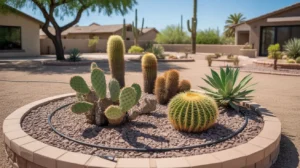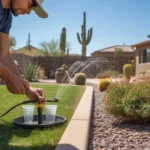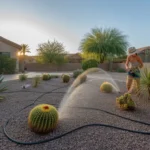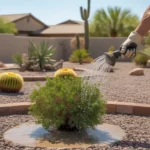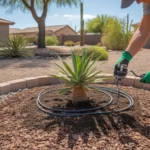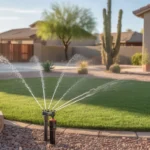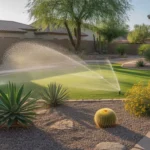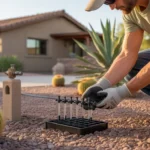As a Chandler homeowner, you know the challenges that come with maintaining a healthy, vibrant yard in our arid desert climate. One common issue that can stress both you and your plants is salt buildup in your irrigation system. Over time, minerals from our hard water can accumulate, leading to clogged emitters, stunted plant growth, and unsightly white deposits on the soil surface. But don’t let salt stress get you down! With a few smart strategies, you can combat irrigation woes and keep your Chandler yard thriving.
🌵 Embrace Cactus Clusters for Natural Drainage
One of the most effective ways to combat salt buildup is to incorporate plants that are naturally adapted to our salty soils. Cactus clusters make an excellent addition to any Chandler landscape, not only for their striking visual appeal but also for their ability to improve drainage and prevent salt accumulation.
When planted in groups, cacti like prickly pear, barrel cactus, and saguaro create a network of roots that help break up compacted soil and allow water to percolate more easily. This improved drainage reduces the likelihood of salt buildup around your other plants’ root zones. As a bonus, cactus clusters add sculptural interest and require minimal irrigation once established, making them a low-maintenance solution for salt-prone areas.
💧 Implement Proper Watering Techniques
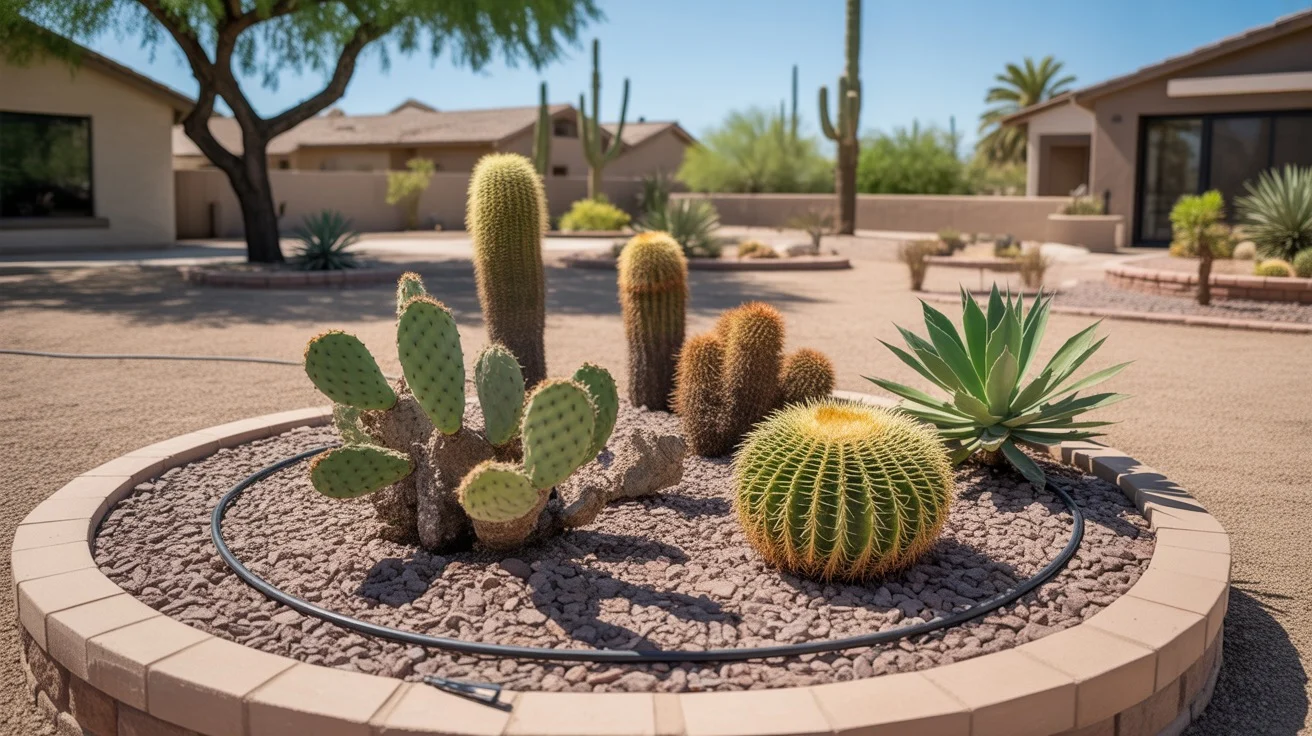
How you water your Chandler yard can have a big impact on salt accumulation. Overwatering is a common culprit, as it allows salts to build up in the soil without sufficient drainage. To avoid this, always check soil moisture before watering and adjust your irrigation schedule accordingly. Aim to water deeply but infrequently, allowing the top inch of soil to dry out between watering sessions.
When possible, water in the early morning hours to minimize evaporation and give plants time to absorb moisture before the heat of the day sets in. If you notice water pooling or running off, reduce your watering time or consider breaking it into shorter cycles to improve absorption. By watering wisely, you can keep salts moving through the soil instead of concentrating around your plants’ roots.
🚿 Regularly Flush Your Irrigation System
Just like your home’s plumbing, your irrigation system needs periodic flushing to clear out accumulated minerals and debris. This is especially important in Chandler, where our hard water leaves behind calcium and magnesium deposits that can clog drip emitters and reduce system efficiency over time.
To flush your system, simply run each zone for a few minutes longer than usual, allowing water to flow freely from the emitters. This extra volume of water helps dissolve and flush away mineral buildup, keeping your system running smoothly. Aim to perform a flush at least once a month during the growing season, or more often if you notice decreased output from your emitters.
As you flush, keep an eye out for any emitters that are not flowing properly or have visible signs of clogging. These may need to be cleaned or replaced to ensure even water distribution throughout your yard. Regular maintenance like this can go a long way in preventing the stress of salt buildup and irrigation issues down the line.
🧂 Monitor Salt Levels and Amend Soil as Needed
Even with proper plant selection and irrigation techniques, it’s important to keep tabs on your soil’s salt levels over time. High salt concentrations can manifest as white crusting on the soil surface, leaf burn on plants, or stunted growth. If you suspect salt buildup is stressing your Chandler yard, consider having your soil professionally tested to determine the extent of the issue.
Based on the results, you may need to amend your soil with gypsum, sulfur, or other corrective materials to help leach excess salts away from plant roots. In severe cases, you may need to temporarily reduce irrigation frequency to allow salts to flush out of the root zone. By monitoring your soil health and taking corrective action as needed, you can keep salt stress at bay and maintain a thriving landscape.
🌿 Choose Salt-Tolerant Plants for Problem Areas
In addition to cactus clusters, there are many other salt-tolerant plants that can help combat irrigation woes in your Chandler yard. Succulents like agave, yucca, and hesperaloe are excellent choices for areas prone to salt buildup, as they can thrive in poor soils and require minimal watering once established.
Other salt-tolerant options include desert-adapted shrubs like Texas sage, desert spoon, and jojoba, as well as groundcovers like trailing rosemary and myoporum. By incorporating these resilient plants into your landscape, you can create a more sustainable and stress-free yard that looks great year-round.
As you plan your salt-busting landscape, consider consulting with a local nursery or landscaping professional who can recommend plants well-suited to your specific soil type and microclimates. With expert guidance and a bit of creativity, you can design a Chandler yard that combats salt buildup beautifully.
💪 Stay Vigilant and Proactive for a Healthy Yard
Combating salt buildup in your Chandler irrigation system requires ongoing vigilance and proactive maintenance. By embracing cactus clusters, implementing proper watering techniques, regularly flushing your system, monitoring salt levels, and choosing salt-tolerant plants, you can create a landscape that is resilient in the face of irrigation challenges.
Remember, even small changes in your watering habits and plant choices can make a big difference over time. Stay observant, address issues promptly, and don’t be afraid to seek expert advice when needed. With a little TLC and some salt-savvy strategies, you can keep your Chandler yard healthy, vibrant, and stress-free for years to come.

